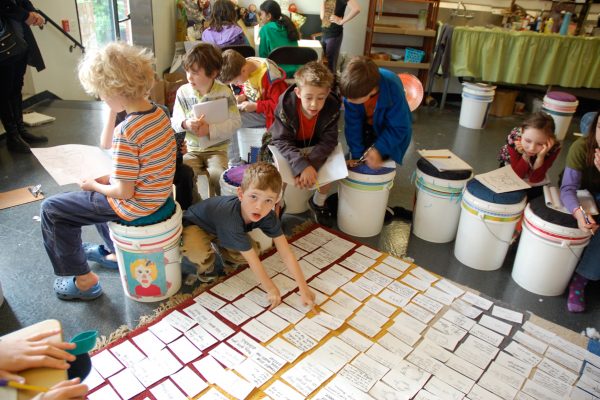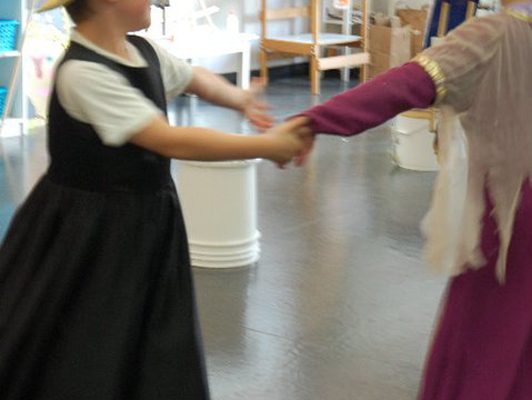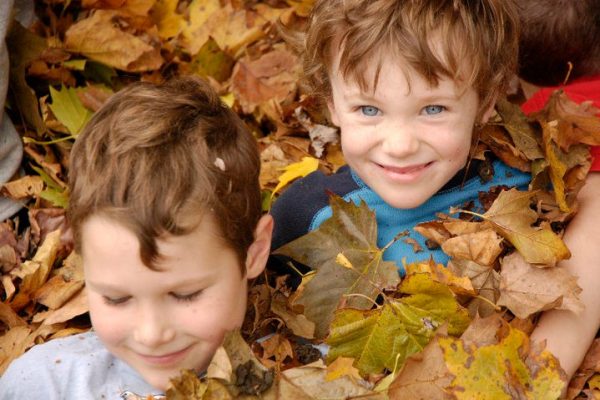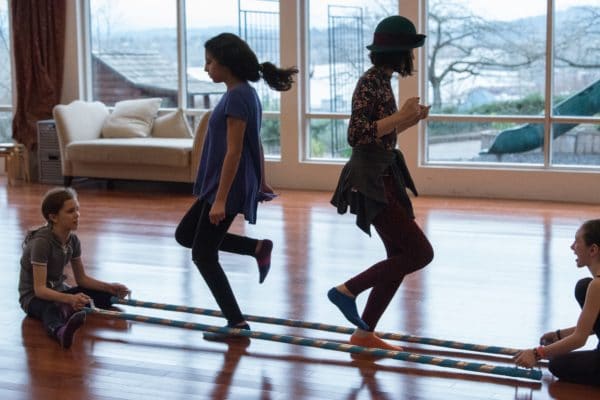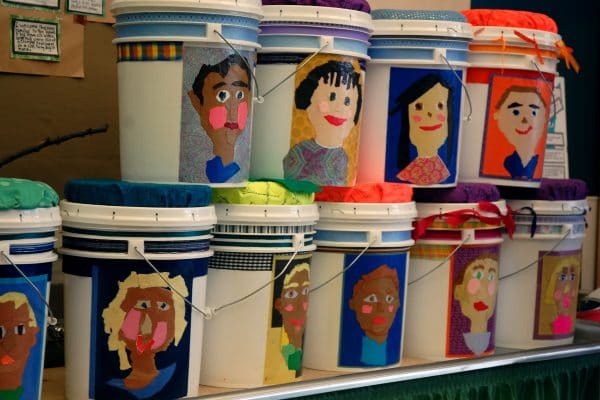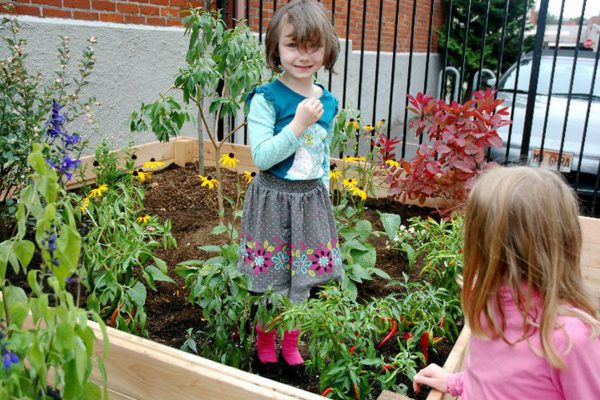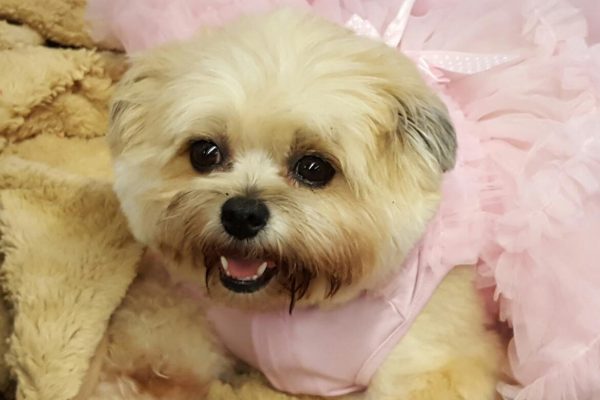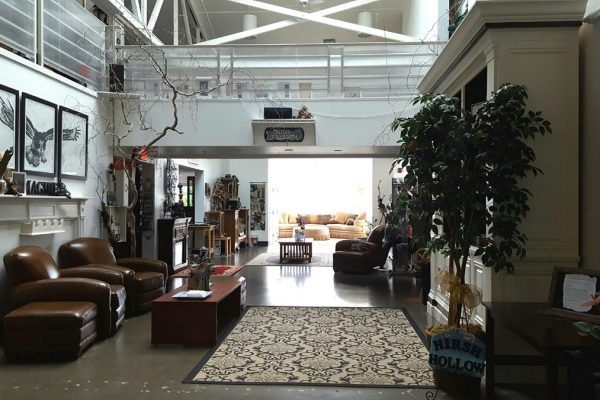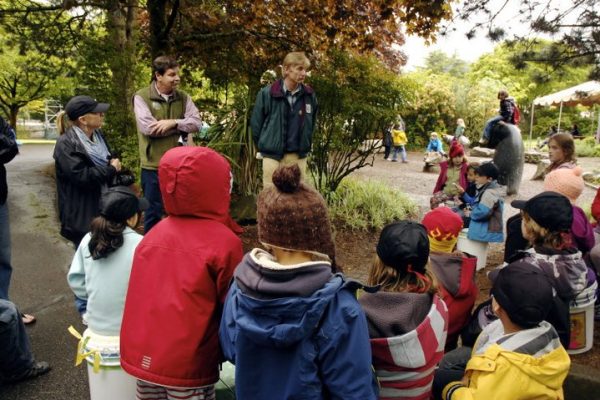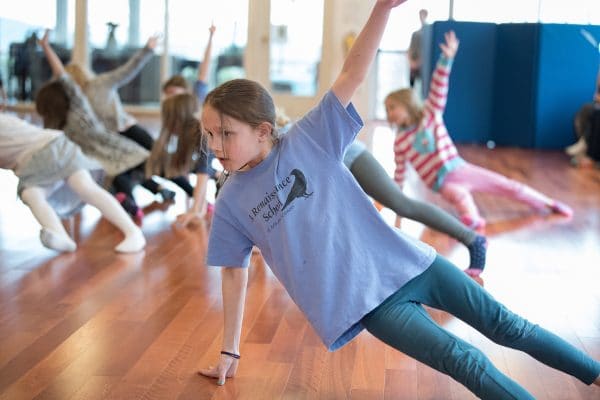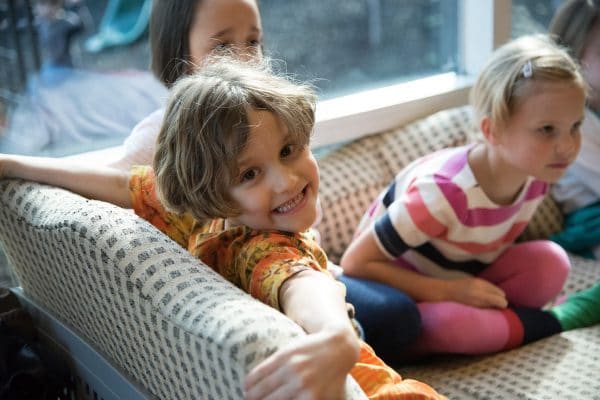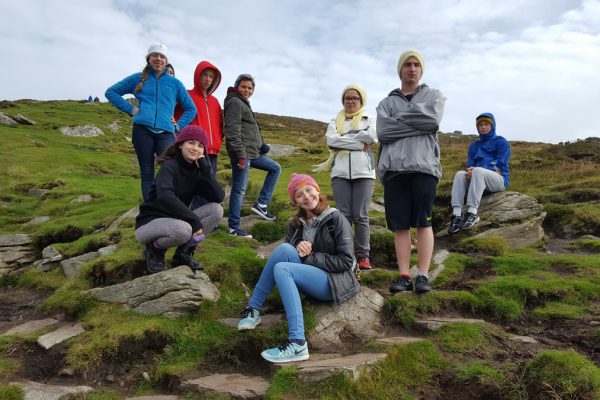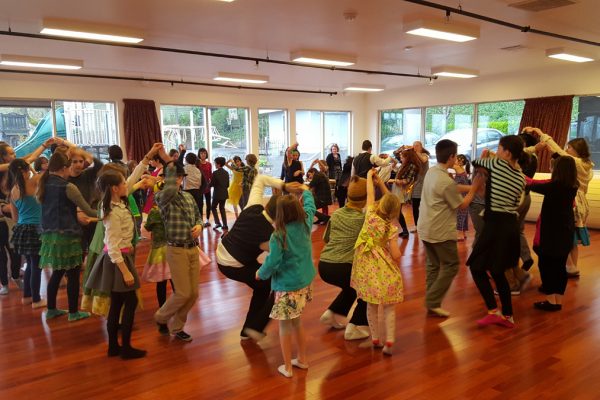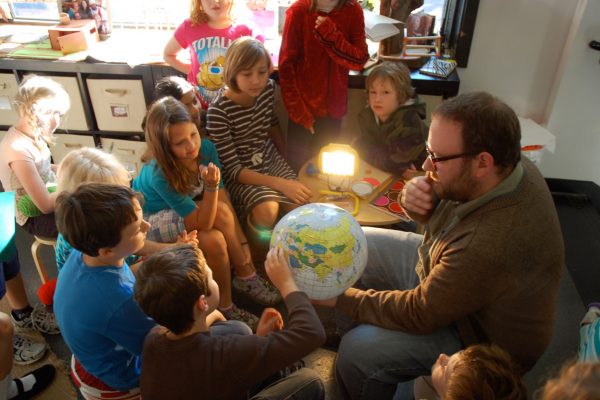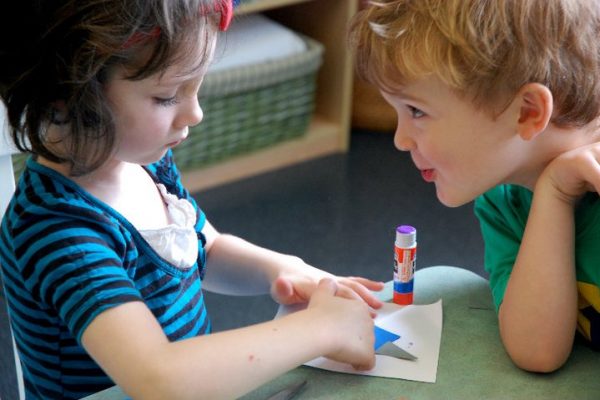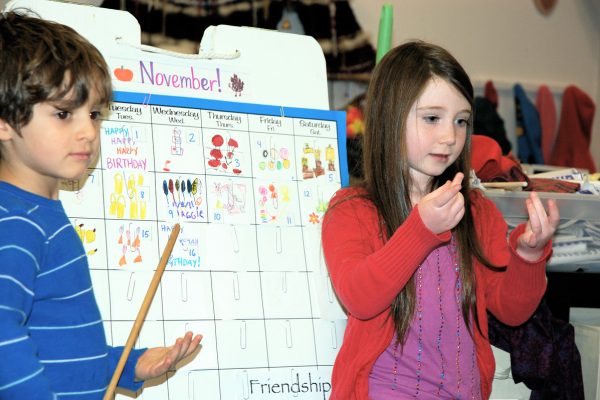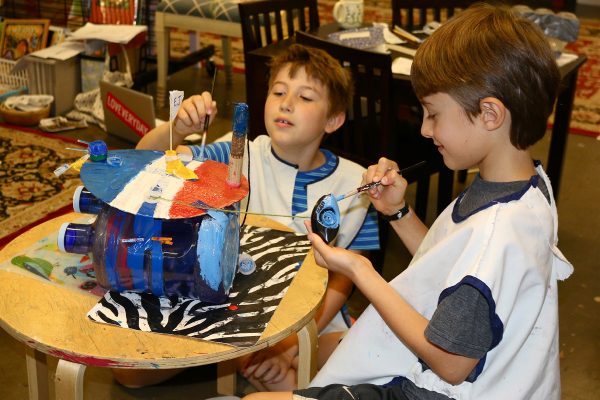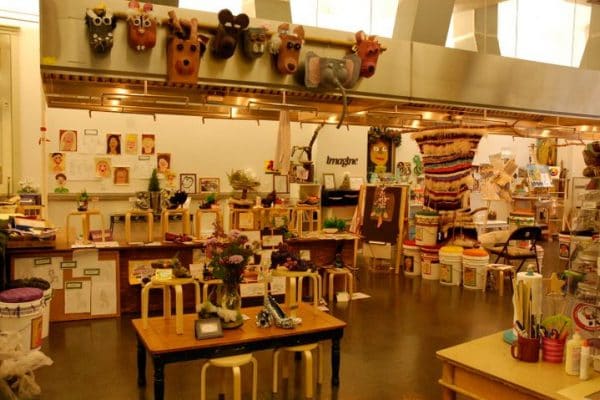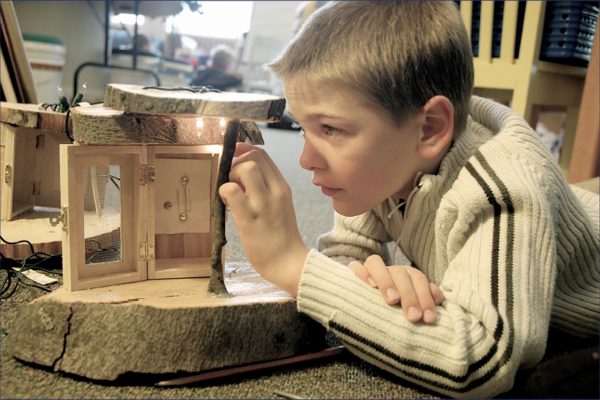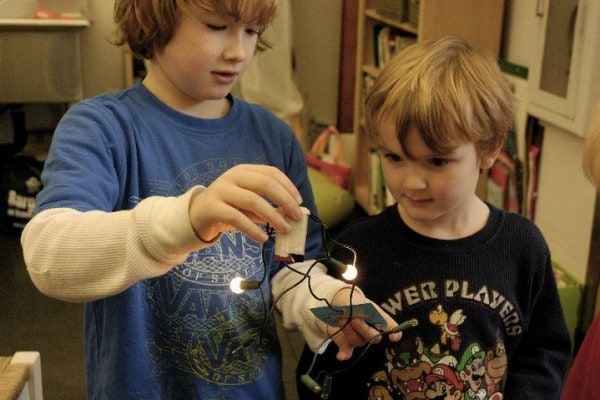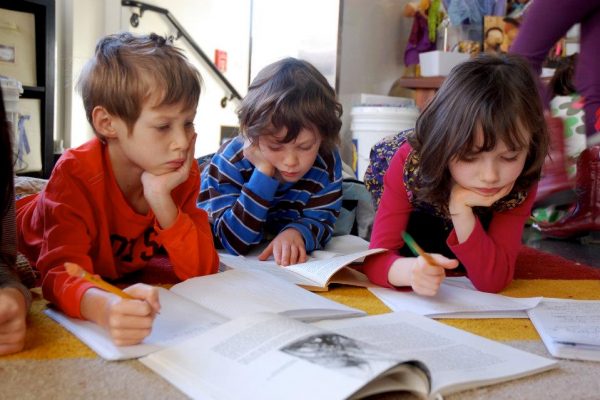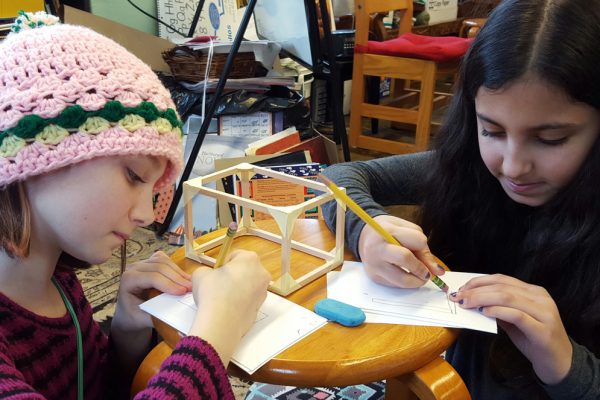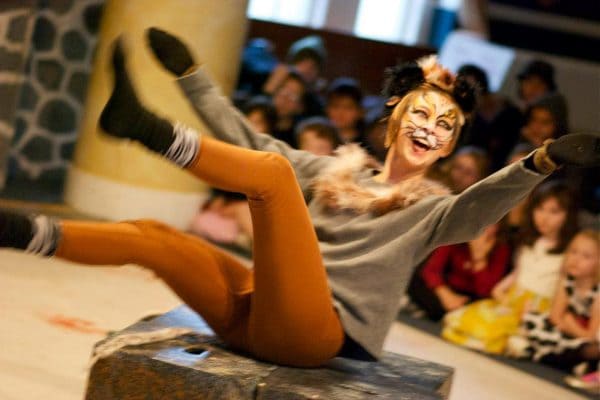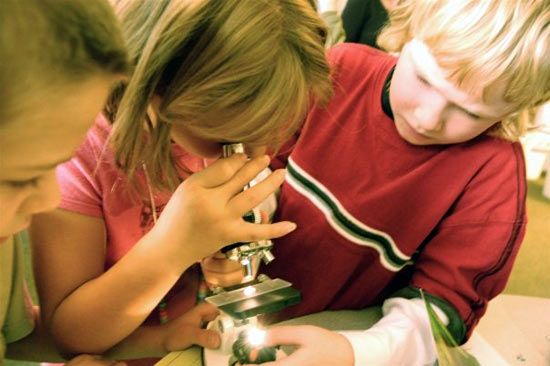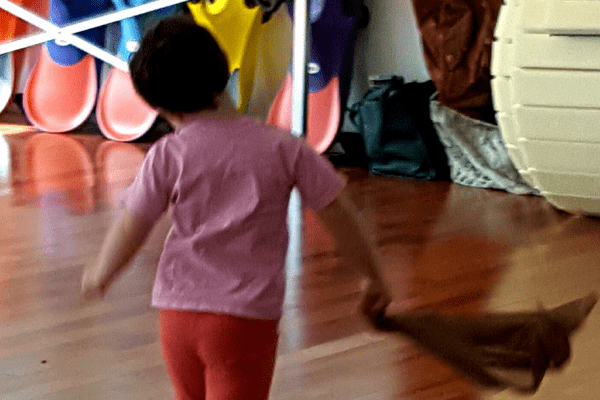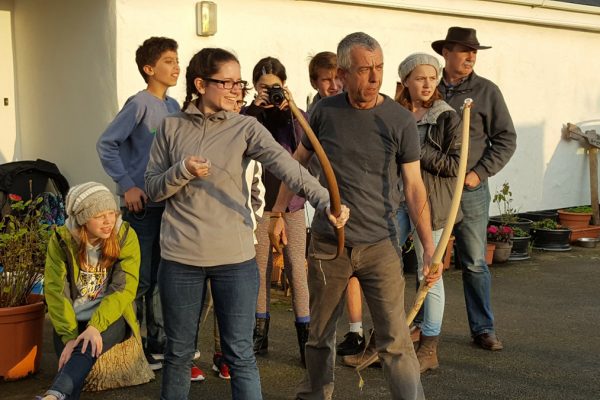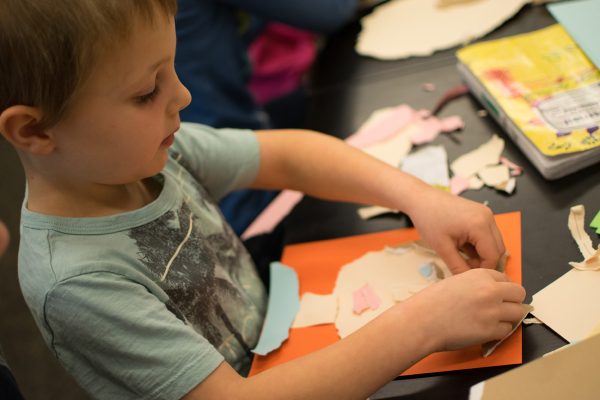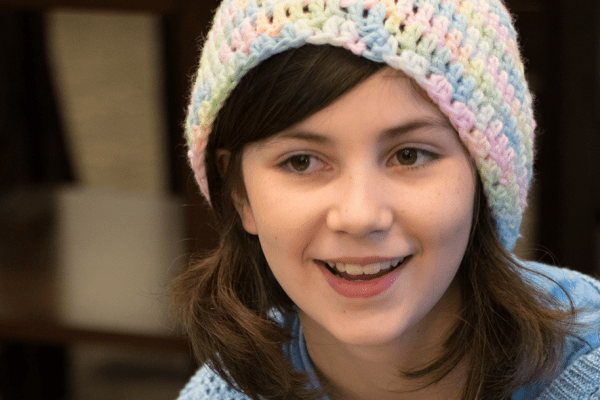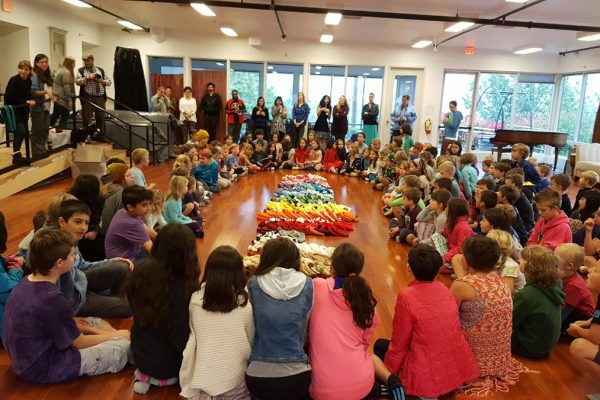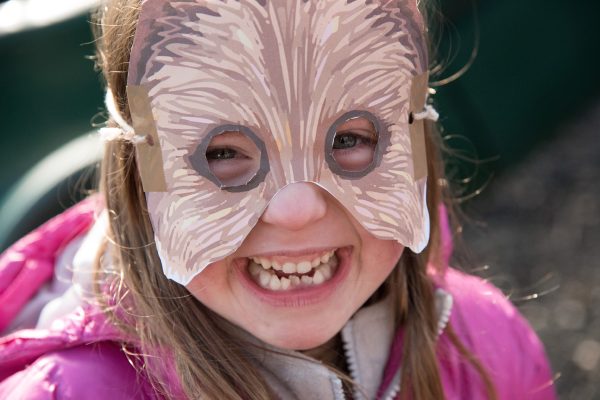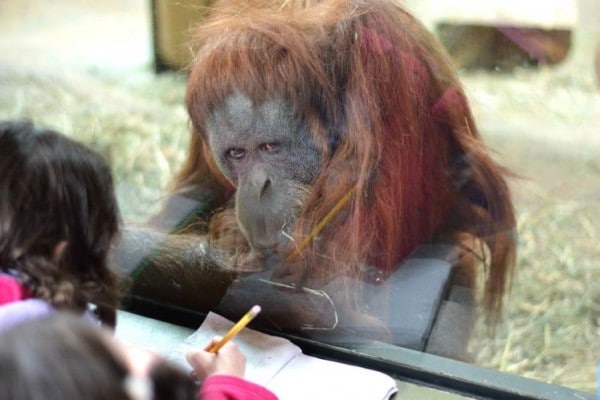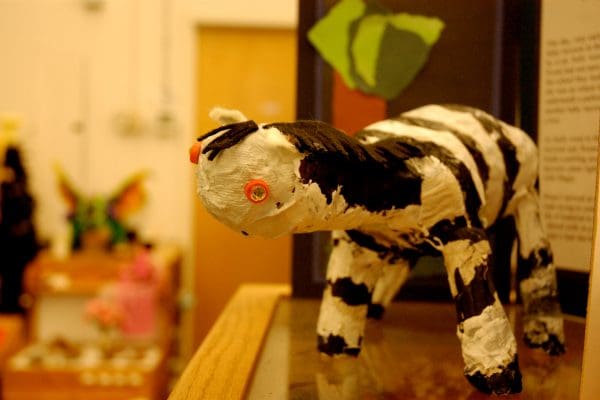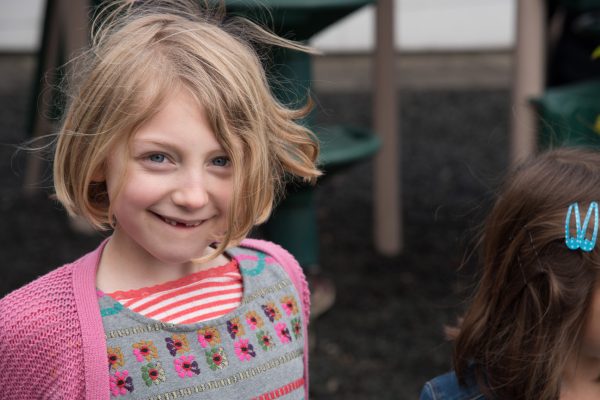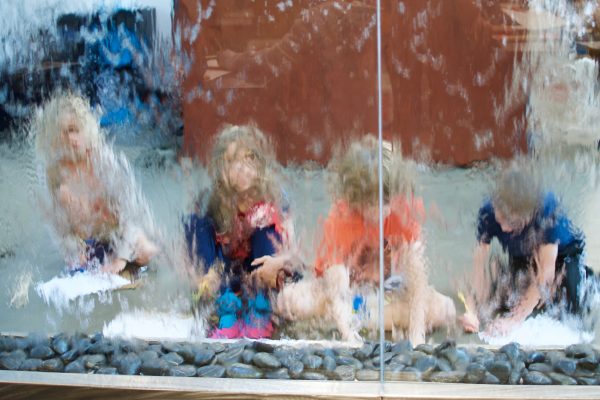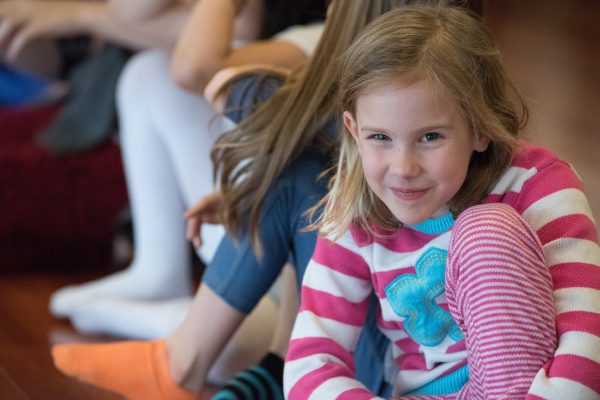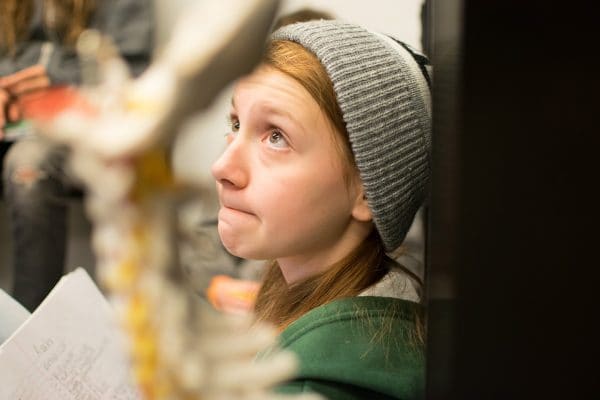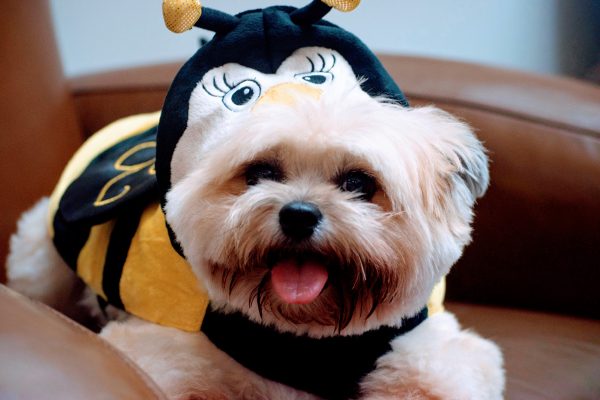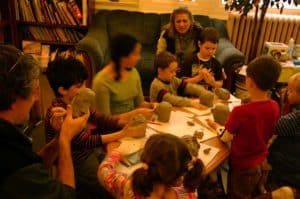 Imagine escorting your mini-self down the hall with a massive grin pressed across your face! You have just created a replica of yourself, at half scale, complete with a clay head, jointed body, hand-sewn clothes, and designer shoes! The playmate moves with marionette strings and invented joints that connect and allow movement. And each being takes on the personality and appearance of a Dreamkeeper!
Imagine escorting your mini-self down the hall with a massive grin pressed across your face! You have just created a replica of yourself, at half scale, complete with a clay head, jointed body, hand-sewn clothes, and designer shoes! The playmate moves with marionette strings and invented joints that connect and allow movement. And each being takes on the personality and appearance of a Dreamkeeper!
This very involved project was documented through journal entries, banks of descriptive and action words, diagrams of the body’s bone structure and corresponding “half” measurements for the marionette, schematics for keeping track of rolled newspaper “bones” in progress, and plans for face colors and fashionable child-crafted clothing. We also used our strategies of train-writing, challenge charts, and “deep” introductory sentences to create full-bodied texts and summaries for display.
measurement, scale, proportion, movement, relationship, prototype, skeleton, change, balance, force, design, adjust, joints, expository, dialog, personality…
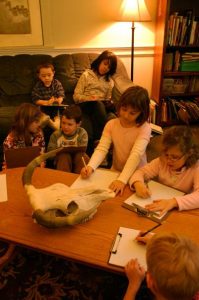 Preparation included sketching a horned creature’s skull and comparing it to the human skull, identifying and recording our major bones, drawing the human skeleton, and discussing the function of that system. We agreed that the skeleton protects soft organs and provides the hanger and form (framework) for the body! We launched lively conversations while measuring our partner’s bones, taking ahold of our arms and making observations about the relative length of an upper arm and forearm. “Proportion” became an important concept as we grappled with the notion of “half,” or “fifty percent,” and made artificial bones half the length of our own. Individual, rolled-newspaper bones simulate the real thing!
Preparation included sketching a horned creature’s skull and comparing it to the human skull, identifying and recording our major bones, drawing the human skeleton, and discussing the function of that system. We agreed that the skeleton protects soft organs and provides the hanger and form (framework) for the body! We launched lively conversations while measuring our partner’s bones, taking ahold of our arms and making observations about the relative length of an upper arm and forearm. “Proportion” became an important concept as we grappled with the notion of “half,” or “fifty percent,” and made artificial bones half the length of our own. Individual, rolled-newspaper bones simulate the real thing!
Special diagram and data collecting sheets were made by each of us and used for reference as bones were made and laid out for deliberation. Those plan sheets were carefully tucked away in designer boxes during the “jointing” phase of the project, as children observed the many forms of “joins” in our built environment, attempted prototypes, and then selected a specific design for elbows, shoulders, hips, neck, and knees. Loose bones were kept safely, labeled to match the plan sheet, as the collection increased to become a full puppet skeleton.
tall, short, long, half, leg, arm, bone, joint, connect, move, swing, roll, tape, prototype, tube, cylinder, vertical, center, right, left, horizontal, journal, plan, variable, duplicate, example, layout, detail, label, test, experiment, draw, sketch…
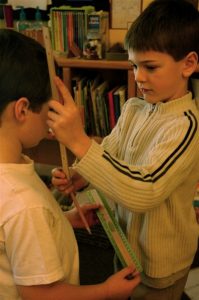 Our wall display held final samples of joints that mimicked movements of joints in the human body. Teams of children completed their exhibits with care in the drawings and descriptions so that others could learn from their ideas and trials. The young designers chose freely from among the many samples for their joint constructions.
Our wall display held final samples of joints that mimicked movements of joints in the human body. Teams of children completed their exhibits with care in the drawings and descriptions so that others could learn from their ideas and trials. The young designers chose freely from among the many samples for their joint constructions.
Children’s questions and discoveries were given prime time during studio discussions, and each child was encouraged to use words, aided by props and gestures when necessary, for a clearer explanation. Words were recoded on charts, as labels, in journal writings, as additions to the word wall, and inside personal dictionaries. Words sprang from the need to communicate excitement, frustration, pondering, and pride; and we managed, in our excitement, to make time to talk and explore words and ideas based on the work at hand, and preceding the task of committing ideas to paper.
texture, shape, bumpy, slip, rough, wet, soft, moist, dry, crack, blend, three-dimensional, two-dimensional, oval, slant, point, hollow, fire, expand, explode, thin, think, pattern, plan, legend, powdery, liquid, pokey, lined, realistic, likeness, character, heavy…
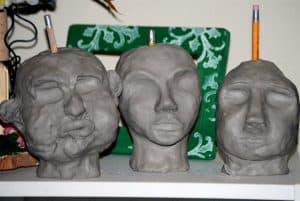 The children were delighted to engage in an enchanting observation of clay and the effects of time and temperature on earth materials. Each child observed their facial features through touch and then used mirrors to draw their faces. In preparation, we talked about the spaces that “poke in” and “stick out” and the sort of clay shapes we needed to add to an oval to build our faces. They carefully drew what they saw, capturing their expressions, child-like, on paper for reference. We were very excited about getting our hands in the clay, wrapping clay slabs around tubes, and actually forming our noses, chins, lips, and cheeks. We left a hollow space in the head for stringing and the possibility of explosion if small air pockets were to expand and shatter in the kiln firing. The clay heads lined our art shelves as a gallery of ourselves. Clay turned from wet and gray to whitish and dry. The heads even shrank a bit! Then, off to the kiln they went, whisked away for firing and the treatment of extreme heat!
The children were delighted to engage in an enchanting observation of clay and the effects of time and temperature on earth materials. Each child observed their facial features through touch and then used mirrors to draw their faces. In preparation, we talked about the spaces that “poke in” and “stick out” and the sort of clay shapes we needed to add to an oval to build our faces. They carefully drew what they saw, capturing their expressions, child-like, on paper for reference. We were very excited about getting our hands in the clay, wrapping clay slabs around tubes, and actually forming our noses, chins, lips, and cheeks. We left a hollow space in the head for stringing and the possibility of explosion if small air pockets were to expand and shatter in the kiln firing. The clay heads lined our art shelves as a gallery of ourselves. Clay turned from wet and gray to whitish and dry. The heads even shrank a bit! Then, off to the kiln they went, whisked away for firing and the treatment of extreme heat!
While we waited for our fired heads to return, we continued to work on joining our bones… We suspended them from the display boards, bookcases, and tables, hoping they would not tangle!
The day the heads returned from a final glaze firing, they were placed carefully in each owner’s hands. A magical silence fell over the group, as child met self in the sculpture. Slowly the silence and the captive stares turned to whispers, followed by comparisons and congratulations amongst the colleagues.
We sketched our little fired friends, photocopied duplicates, and tested multiple plans for the painting and decoration of our faces on the copies. Each of these miniatures was to become a “Dreamkeeper” and we had yet to figure out just what that meant!!!!
similar, crackled, glassy, shiny, warm, bumpy, warped, dent, smooth, hard, sharp… mine!
Costume designing and stitching held more discoveries to be proclaimed. Did you know that the material you cut has to go all the way around the body? It looked different in the drawing! Did you know that you must allow enough room for a seam? What happens if you do not have enough of the materials you were hoping to have? How do you get things to line up and how can you make the stitches the same size so it looks good?
straight, pattern, longer, crooked, conserve, even, decoration, wrinkle, sew, embroider, knit, inside, outside, snap, zip, button, loop, selvage, hem…
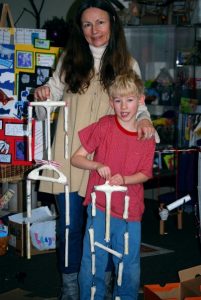 Stringing puppet pals was another challenge. “Becoming” a puppet and imagining the placement of the strings allowed children to act out their hypotheses about movement, tension, balance, and resting positions. This bit of drama required children to think about the consequences before attempting to physically attach the strings. The main string ran from the head to the crossbars. The length of string to the arms and legs determined the positions of limbs at rest. Should the string be attached at the elbow, the forearm, upper arm, wrist, or hand? To the upper leg, knee, ankle or foot? Heel or toes? How is the limb movement affected by the placement decision? Learning to control the little characters made adjustments necessary and put the imagined into action!
Stringing puppet pals was another challenge. “Becoming” a puppet and imagining the placement of the strings allowed children to act out their hypotheses about movement, tension, balance, and resting positions. This bit of drama required children to think about the consequences before attempting to physically attach the strings. The main string ran from the head to the crossbars. The length of string to the arms and legs determined the positions of limbs at rest. Should the string be attached at the elbow, the forearm, upper arm, wrist, or hand? To the upper leg, knee, ankle or foot? Heel or toes? How is the limb movement affected by the placement decision? Learning to control the little characters made adjustments necessary and put the imagined into action!
balance, raise, lower, attach, control, flop, wiggle, rest, tension, rotate, loose, tight, flexible, adjust…
The children created displays of their thinking and work, taking aspects of the making process and revealing their thinking for others to learn what they had done to be successful. Individuals tackled exhibits on making the head, making the body, designing the clothing, and creating the shoes. Each display held information in multiple forms—drawings, labels, expository writing, statement of learning, a title and the author of the prized piece, all matted to draw an audience’s attention.
The ultimate writing was completed at the close of the project, offering up playlet scripts in which two marionette friends solve a problem together, a ripe opportunity for puppet masters to practice skills of public-speaking. The plays themselves became a bound book on problem-solving, a gift for the school.
 Imagine then, after months of concentrated effort, suffused with academic skills and pride, the first parade of pals, strolling through the school halls to the gasps and applause of onlookers, certain that these very young puppet masters must possess genius!
Imagine then, after months of concentrated effort, suffused with academic skills and pride, the first parade of pals, strolling through the school halls to the gasps and applause of onlookers, certain that these very young puppet masters must possess genius!
And it is true! Each child’s genius was tapped and shared as a source of inspiration and learning for others. Projects are selected for their abilities to carry content, vocabulary, and skill development. Skills are intentionally brought to the foreground, practiced, and applied, developed within the context whenever possible of child-centered, language-rich, and concept-powered units of study. Children reveal their needs through activities the teacher supervises closely and links to instruction are made in a timely effort to allow children to succeed in the larger task in front of them.
From planning and realization of those plans, from two-dimensional to three-dimensional, children tracked their progress by using early drawings, photographs, and journal entries. Using these props, children sequenced the evidence of thinking and action, and structured the outline for a retelling, oral or written. Each phase of their work brought opportunities for reflection, a pause for forward planning, and consideration of available options in the choices that were made along the way.
“Where do we find mechanisms that join and allow movement?”
Looking closely at the human-made and natural world, children learn to borrow ideas, change and combine elements, apply concepts, and improve upon them!
